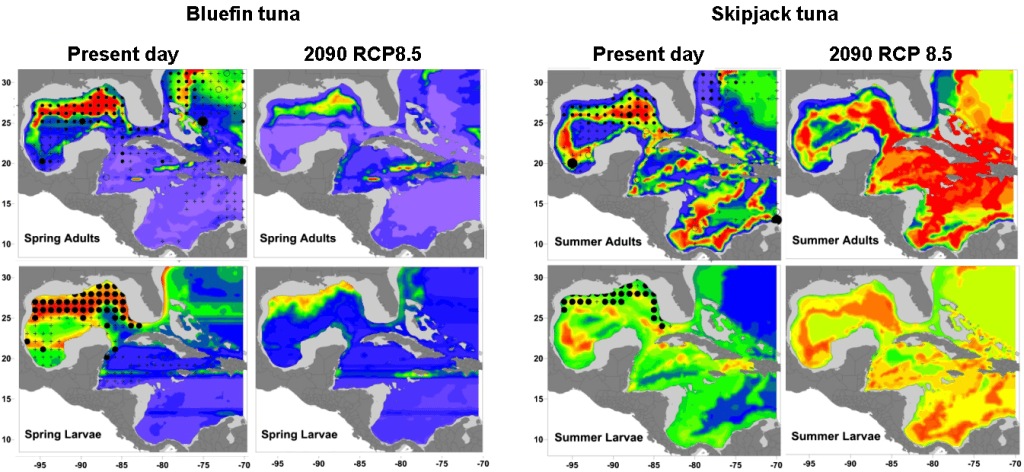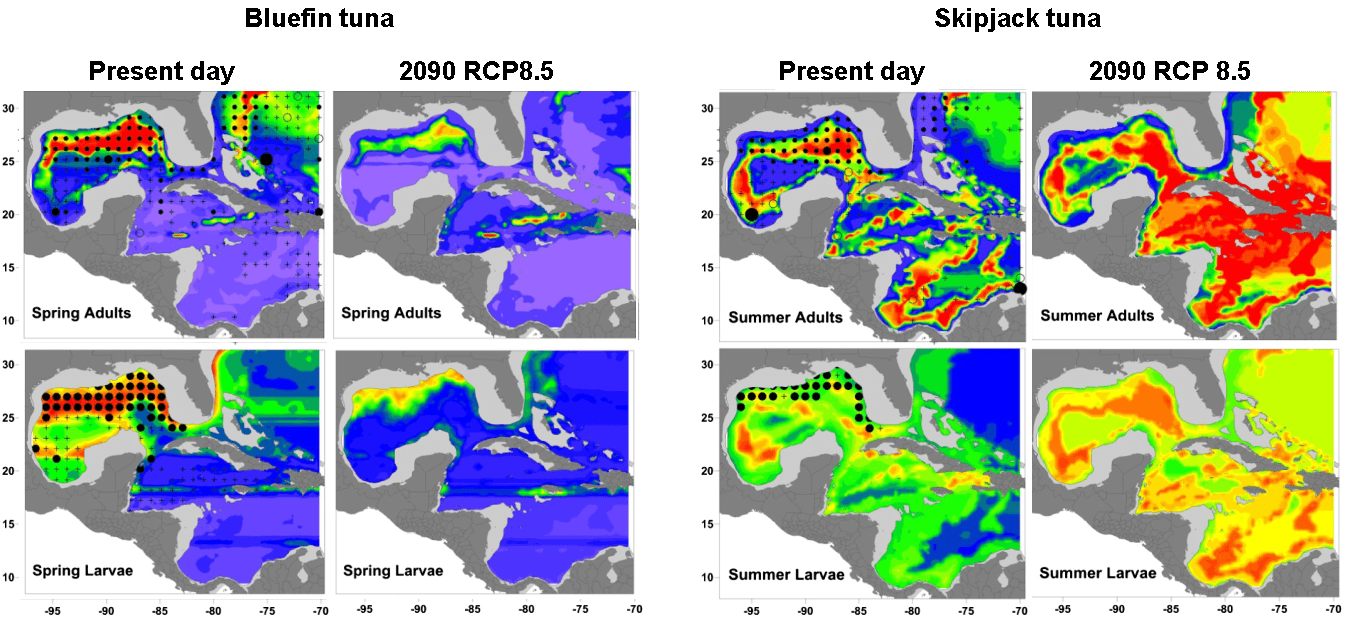A collaboration paper between SEFSC and AOML/PhOD scientists Potential impact of climate change on the intra-Americas sea: Part 2. Implications for Atlantic bluefin tuna and skipjack was selected as a NOAA research highlight.
Increasing water temperatures due to climate change will likely have significant impacts on distributions and life histories of Atlantic tunas. In a research article recently published online in the Journal of Marine Systems, a team of scientists from CIMAS, SEFSC and AOML/PhOD combined predictive habitat models with a downscaled climate model to examine potential impacts on adults and larvae of Atlantic bluefin tuna (Thunnus thynnus) and skipjack tuna (Katsuwonus pelamis) in the Intra-Americas Sea (IAS). An additional downscaled model covering the 20th century was used to compare habitat fluctuations from natural variability to predicted future changes under two climate change scenarios: Representative Concentration Pathway (RCP) 4.5 (medium-low) and RCP 8.5 (high). Results showed marked temperature-induced habitat losses for both adult and larval bluefin tuna on their northern Gulf of Mexico spawning grounds (Figure). In contrast, habitat suitability for skipjack tuna increased as temperatures warmed. Model error was highest for the two skipjack tuna models, particularly at higher temperatures. While impacts on fish populations remain uncertain, these changes in habitat suitability will likely alter the spatial and temporal availability of species to fishing fleets, and challenge equilibrium assumptions of environmental stability, upon which fisheries management benchmarks are based.

Muhling B. A., Y. Liu, S. K. Lee, J. T. Lamkin, M. A. Roffer, F. Muller Karger and J. F. Walter, 2015: Potential impact of climate change on the Intra Americas Seas: Part 2. Implications for Atlantic bluefin tuna and skipjack tuna adult and larval habitats. J. Marine Syst., 148, 113, doi:10.1016/j.jmarsys.2015.01.010.
